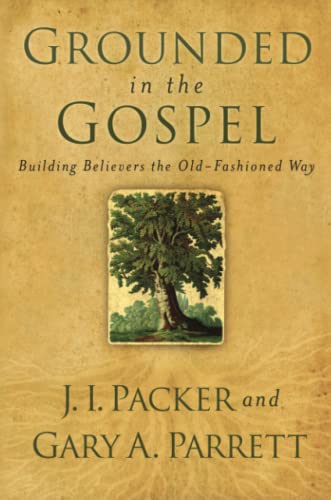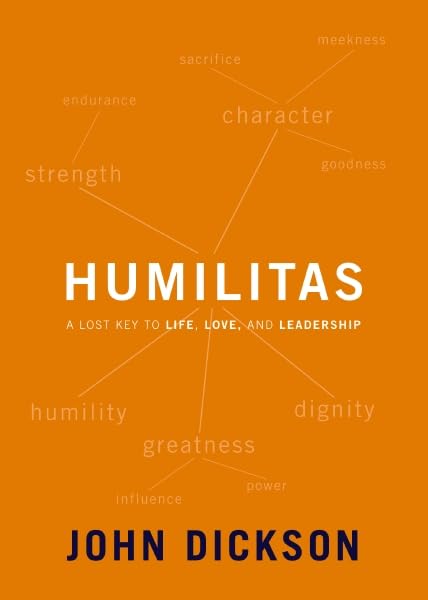Grounded in the Gospel: Building Believers the Old Fashioned Way
Written by J. I. Packer and Gary A. Parrett Reviewed By Mitchell KimSoaring obesity rates show the effects of people eating whatever they want, so the FDA's “food plate” colorfully pictures proper proportions to encourage healthier eating. Analogously, Christians today need a (spiritual) “food plate.” The church's spiritual obesity can be seen in its “moralistic therapeutic deism” (so-termed by sociologist Christian Smith) as Christians and small groups pick and choose from the bewildering panoply of Bible study resources churned out by celebrity authors. The loose ties of many evangelicals to denominational structures lead to an unhealthy market-approach to Bible study. When small groups choose their topics based on “felt needs” without an overarching “food plate” of what those needs should be, imbalance is inevitable.
To remedy this problem, theological heavyweight J. I. Packer joins hands with educational ministries expert and Gordon-Conwell professor Gary A. Parrett in Grounded in the Gospel: Building Believers the Old Fashioned Way. Together they sketch a spiritual “food plate,” a framework for systematic instruction (catechesis) in Christian belief, worship practice, and lifestyle.
Chapter 1 calls for “Building Believers the Old Fashioned Way,” providing catechesis as a rubric for “the church's ministry of grounding and growing God's people in the Gospel and its implications for doctrine, devotion, duty, and delight” (p. 29). Chapter 2 argues that “Catechesis is a (Very!) Biblical Idea,” grounded in the calls in the OT (e.g., Deut 6:7-9; Pss 1; 119:105) and the NT's use of katecheÅ� (“to instruct”; e.g., Luke 1:3-4; Acts 18:25; Gal 6:6), didache (“the teaching”; e.g., Acts 2:42; Rom 6:17; 1 Tim 4:6; Titus 2:10; 2 John 9-11), paradÅ�sis (“tradition”; e.g., 2 Thess 2:15; 3:6), and paradidÅ�mi (“handed down”; e.g., Luke 1:1-2; Rom 6:17; 2 Pet 2:21; 1 Cor 11:2, 23; 15:3-5). Chapter 3 examines “The Waxing and Waning of Catechesis,” with its growth in the early church, the Reformation, and the Puritan period, as well as its decline in the late nineteenth and twentieth century. Chapter 4 explores “Sources and Resources for Catechetical Ministry” with five frames (Triune God, Scripture, story, gospel, faith) developing four fixtures (the Creed, Lord's Prayer, Decalogue, and Sacraments) to express three facets of our faith (Truth, Life, and Way) to fulfill the two fundamentals (love of God and of neighbor) for the one focus of proclaiming Christ.
Chapter 5 asserts the “Gospel as of First Importance,” while chapter 6 develops “The Three Facets of the Faith” as we are taught by the Truth (theology as summarized in the Apostle's Creed), liberated by the Life (worship taught through the Lord's Prayer) so that we might walk in the Way (ethics as seen in the Decalogue). Chapter 7 calls us “Forward in the Faith of the Gospel,” showing how memorizing catechisms in early years provide categories of understanding that are filled out as children get older. Chapter 8 discusses “Drawing Lines and Choosing Sides,” distinguishing primary areas of Christian consensus (vis-á-vis other religions) from secondary elements of evangelical essentials (vis-á-vis Catholicism and Orthodoxy) and tertiary denominational distinctives and congregational commitments. In “Moving In and Moving On,” chapter 9 provides a model for configuring and implementing catechesis in evangelical churches today. Adhering to Christian consensus and evangelical essentials should be required for those wishing to be baptized, while membership and leadership in a congregation must require adhering to denominational distinctives and congregational commitments. Finally, chapter 10 concludes with practical tips on “Championing Catechesis in Contemporary Congregations.”
Grounded in the Gospel provides many helpful insights. Most importantly, the authors provide a holistic framework for the process of making disciples in the local church, combining doctrine with devotion, duty and delight. Also, they rightly commend the oft-neglected catechisms to supplement the anemic diet of many spiritually obese Christians today. The church not only needs the new releases from Francis Chan, Mark Driscoll, and Rick Warren but also the golden oldies of Heidelberg, Luther, and Augustine. However, the stimulating breadth of catechisms examined prevents depth or satisfactory examination of any one catechism. This book may provide a helpful primer to, say, Kevin DeYoung's recent exposition of the Heidelberg Catechism ( The Good News We Almost Forgot:Rediscovering the Gospel in a 16th Century Catechism [Chicago: Moody, 2010]). Also, the abundance of lists and mnemonic devices (e.g., five founts, four fixtures, three facets, two fundamentals, one focus) felt confusing at best and arbitrary at worst, attempting to bring unity to the diversity of different catechisms in one overarching framework.
Nevertheless, Packer and Parrett conclude with a simpler “food plate,” revolving around the Truth (epitomized in the Apostles' Creed), the Life (as seen in the Lord's Prayer), and the Way (evidenced in the Decalogue; see further on p. 166) to encourage healthy catechesis. Such a “food plate” implemented in both formal and informal settings could do much to alleviate the spiritual obesity of the church today.
Mitchell Kim
Mitchell Kim
Living Water Alliance Church
Warrenville, Illinois, USA
Other Articles in this Issue
Evaluating a new English translation of the Bible can be extremely difficult...
In the November 2009 edition of Themelios, Dane C...
Jonathan Edwards (1703-1758) is remembered today as a saint, scholar, preacher, pastor, metaphysician, revival leader, theologian, Calvinist—the list goes on...
Almost two decades ago I wrote an essay titled " When Is Spirituality Spiritual? Reflections on Some Problems of Definition ...
He was the youngest son of elderly parents. His childhood was secluded and unhappy, which might in some measure account for his lifelong melancholy...







